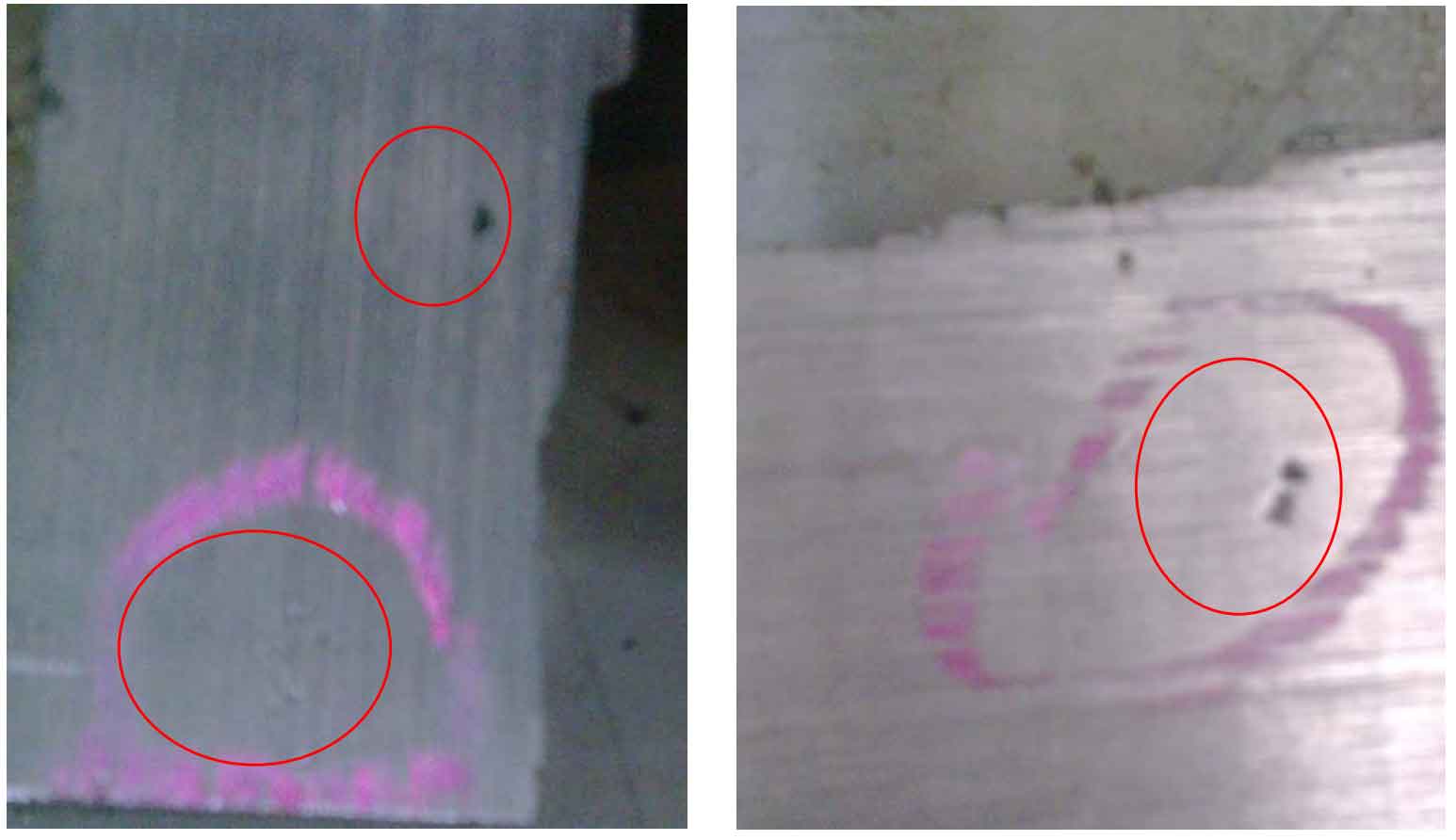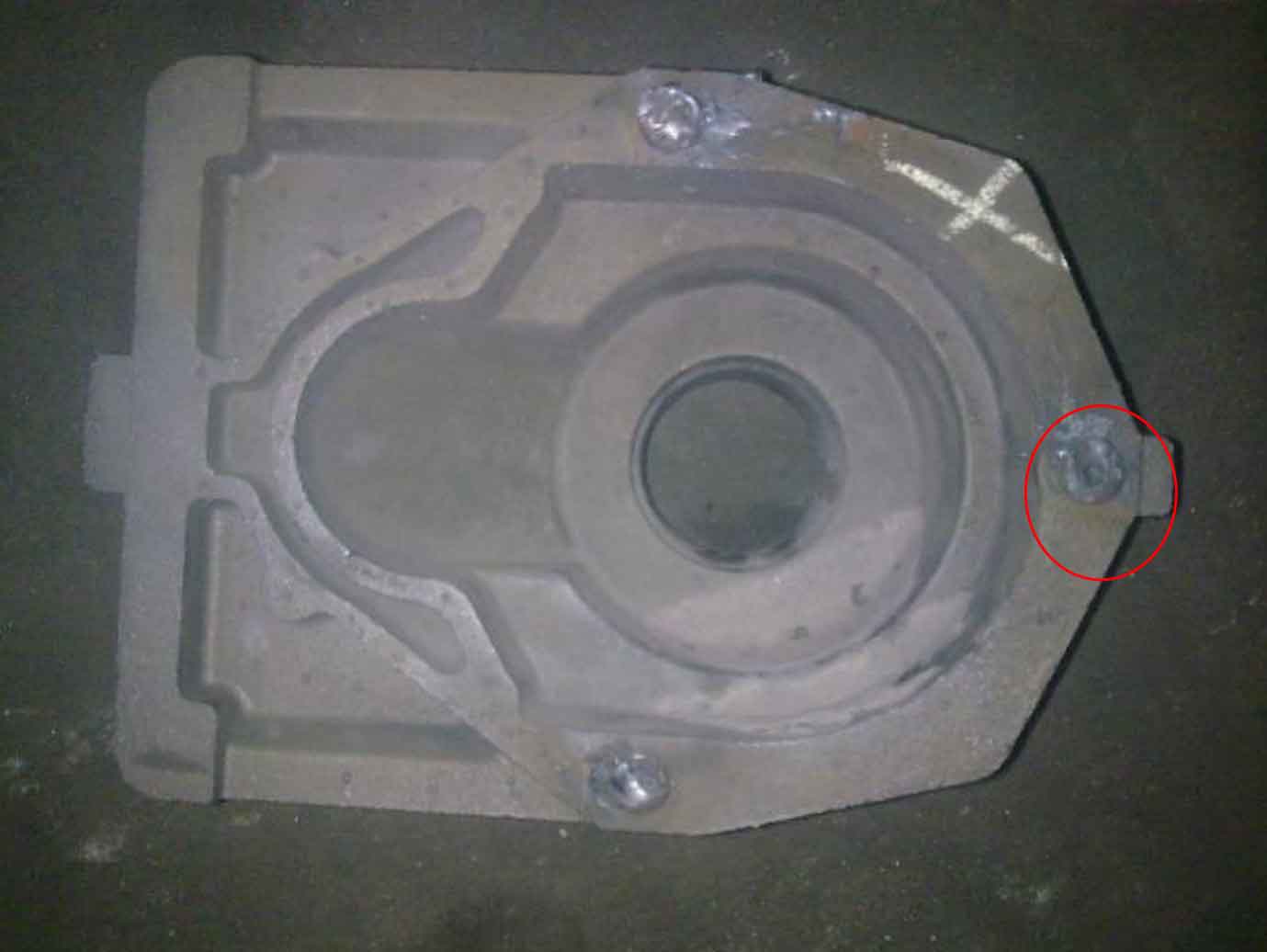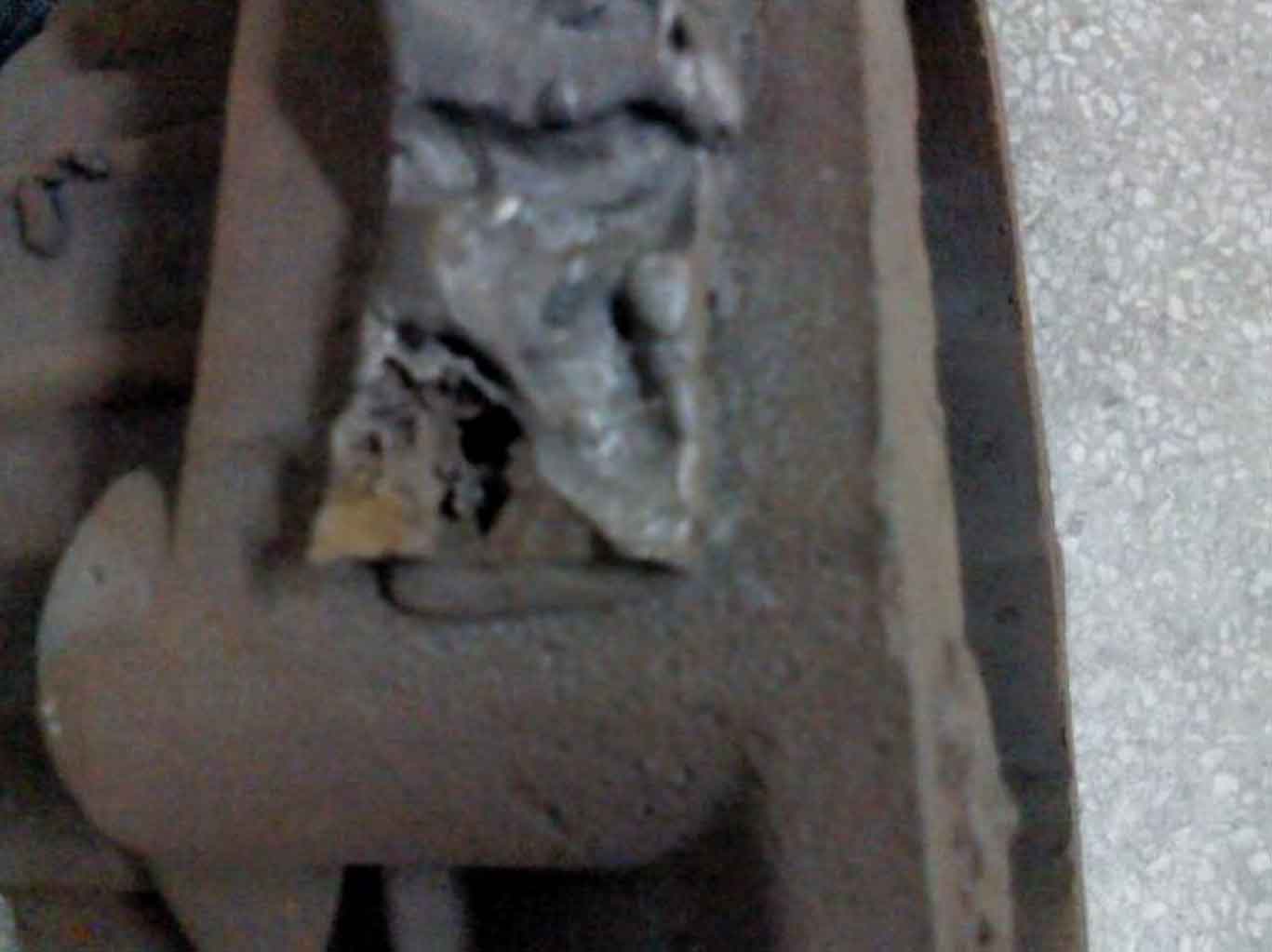The internal shrinkage porosity and shrinkage cavity of the casting produced by the original lost foam casting process is relatively serious, especially on the lower surface of the casting. Obvious shrinkage porosity and shrinkage cavity defects can be seen after machining, as shown in Figure 1. When the situation is serious, obvious shrinkage can be seen at the part where the inner gate is cut off, as shown in Figure 2.
Later, in order to increase the feeding effect, a riser was added on the side of the lost foam casting, but the effect is still not ideal. The existence of shrinkage cavity can be clearly seen at the part where the riser is removed, as shown in Figure 3.
In addition, there are shrinkage porosity and shrinkage cavity defects on the large rotation face of lost foam castings. The reason for the defect is analyzed. It is considered that the reason for this defect may be that the large part of the lost foam casting is placed on the upper part, so that the feeding effect of the lost foam casting is not ideal. In order to better analyze the causes of defects, we use ProCAST to simulate the filling process and solidification process of lost foam casting.



